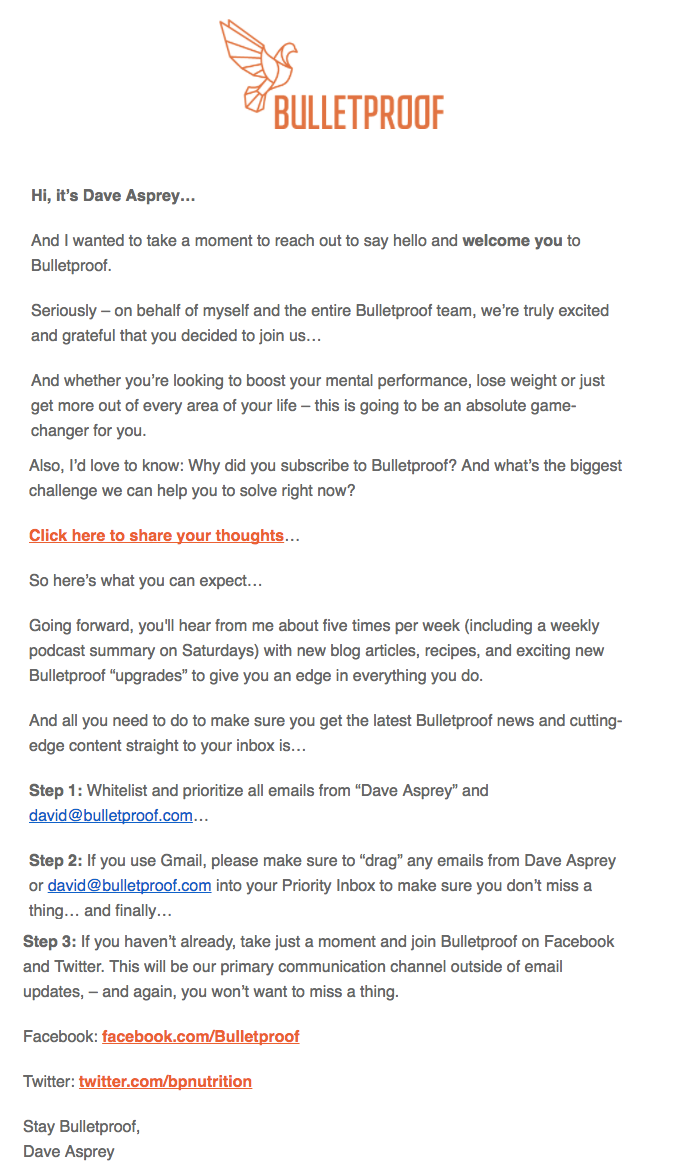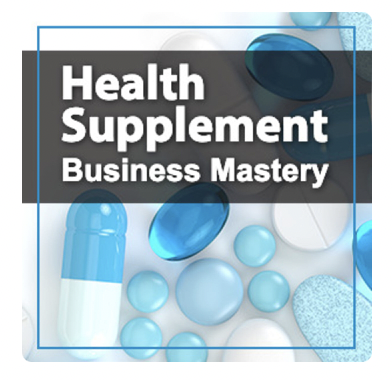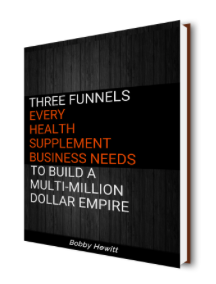Any experienced direct response marketer will tell you…
“The money is in the backend.”
This is a core principle of Internet Marketing.
In fact, the backend is the only way to truly monetize a cold traffic funnel.
This simply means you’ll earn the most profit in the backend.
But wait…
What is The Backend?
The backend is any sale from an existing customer, after the initial sale.
It differs from the frontend in that the frontend is a sale from a brand new customer.
With a backend sales, there is a lag between the initial sale and backend sale. This lag time can be a few days or even weeks or months.
How Is That Different From An Upsell?
An upsell, on the other hand, are offers you make to your customer immediately after the initial sale but before they complete their order.
How Do Customers Buy From The Backend?
The reason why money is in the backend is because you’ve already spent advertising dollars to get the customer. So the cost of selling to them again is minimal.
In fact, as high as 35% of your existing customers are likely to buy from you again. That is, if you’ve nurtured the relationship properly.
To nurture this relationship, you’ll need to move from accelerated trust to gradual trust. This is usually done through a follow up sequence.
What Is a Follow Up Sequence?
The follow up sequence (FUS) is typically a series of emails that a customer gets which ascends them up to the next level of sale.
This simply means selling them more products.
The FUS is designed to increase customer lifetime value from your existing customers, thereby off-setting your marketing spend. Remember this is the reason why the money is in the backend?
But, the FUS is not just a series of emails to sell stuff.
A proper strategic follow up sequence does a few things right.
First it, builds gradual trust in the relationship.
Gradual trust is that level of trust that’s built over time. It welcomes the new buyer to the company mission and indoctrinates them into the lifestyle.
Let’s take a look at an example email follow up from Bulletproof Coffee.

This email is one of the first that you get when you place an order.
It does a couple of things.
First, it starts a dialog as a way of building trust.
It does this by specifically calling out a way for you to share your thoughts, by clicking on a link.
Which is a cleaver way to have your audience segment themselves based on their answers and to get a better understanding of them.
But before it even does that, it reassures you that you’re O.K. with the copy:
…weather you’re looking to boost your mental performance, lose weight or just get more out of every area of your life…
That pretty much covers everyone doesn’t it? Or at least everyone that fits into the Bulletproof tribe.
Second, it bolsters the level of trust by telling you what to expect… telling you that you’re going to get more emails, about five times per week.
And finally it makes a few asks of you that are little trust nuggets. By asking you to whitelist the email, connecting on Facebook and Twitter.
All of these combined help to strengthen the level of trust you have with them.
One Area Every Health Business Overlooks
A good follow up sequence continues to strengthen trust overtime, before asking for the next sale.
One way to do this, that most health supplement businesses fail at, is using the FUS to reinforces the commitment.
Most marketers don’t realize that health supplements are a lifestyle choice. In order to get the benefits of taking them one needs to be committed and develop a habit of taking them. And of course believe in the idea of taking supplements.
For some it’s easy. They are already in the subclass of health enthusiasts that are taking more then five different supplements. But others are augmenting their health journey.
The lion share of why people take a supplement looks like this:
45% of people take supplements in order to improve their health or themselves.
33% want to maintain their current level of health.
So the reinforcement of the commitment to take this new bottle on a daily basis needs to look something like this in the follow up sequence.
It’s Easy to Fall Off The Wagon
For a monthly subscription based health supplement product the FUS also supports extending the length of continuity.
On average people stick for about three or four months before dropping off of monthly continuity.
If you can extend that by just one additional month that’s a ton of profit to the bottom line.
People need a little nudge, even hard core health supplement nuts.
A strong FUS reinforces the reasons why you’re on recurring continuity which taps into the consistency principal.
The principle of commitment and consistency is one of six persuasion principles from Dr. Robert Cialdini and it goes like this:
Principle: Our actions and promises must align with our inner choices.
When what we did or said we would do (i.e our commitments ) are not aligned with our beliefs or self story, there is an inner friction that just doesn’t feel right with us until we restore alignment. In short we need our commitments to be consistent with our inner beliefs of ourselves.
If you want to learn more about the other five persuasion principles, here’s a great video explaining all six.
An Advanced FUS Lesson
The more advanced health businesses will maximize their follow up sequences by segmenting their list…
But, how do you split them off?
Here’s what a very successful FUS segmentation looks like:
One way is to use different follow up sequences…
- One FUS for all non buyers who just completed step one (if you have a step one) of your funnel.
Step one usually consists of filling out a part of the order process. For example just filling out an email or email and shipping address before being taken to a step two to fill in their credit card information.
- One FUS for buyers who just took the front-end offer in your funnel but nothing else.
They have gotten over the initial accelerated trust hurdle but have not gone much further.
- One FUS for buyers who took one or more up-sells in your funnel
These buyers are more valuable since they were willing to spend more money with you on the initial sale. These buyers are going to be some of your best buyers and highest life time value customers.
What do you sell on the backend?
There are two ways to determine what’s the next logical thing to sell on your backend.
The first place to look is your data. What are people already buying next after they bought their first item from you?
Or look at someone else data. Other sites are selling products that solve the same problem that you do. A quick search will turn up several. One quick way to find this data is to do a search on Amazon and see what other products customers have also purchased. Then create or add products like that.
The second way is to approach it from a problem perspective. Look at what problem the customer is trying to solve with your health product. Ask yourself if you were their doctor, what would you prescribe to help them on a more global level. What else would complement the solution they are looking for?
Here’s an example.
Let’s say you’re selling a weightless supplement product.
What else could you sell them? If you approach this from a problem perspective then the problem they have is losing weight but that might also mean they don’t know what exercises to do or they have a motivation problem. One thing you could sell them would be a one-on-one or group coaching program, or an information product that outlines step by step what exercises to do. Each of these examples supports the main problem of losing weight.
Monetizing The Entire Trust Journey
Your backend along with a well crafted follow up sequence strategy changes the economics of your front-end sales funnel.
More advanced marketers will look at the entire trust journey from the initial hurdle of trust a visitor needs to get over to make the front end sale all the way through the trust of selling up-sells within the funnel and continuing beyond to the gradual trust stage in the backend.
If you need help with building your own trust journey or even just strengthening it, drop me a line. Maybe we can help.
Discover the 3 funnels that can help your health supplement business succeed.

Listen to the Health Supplement Business Mastery Podcast for for dietary supplement entrepreneurs and marketers.



